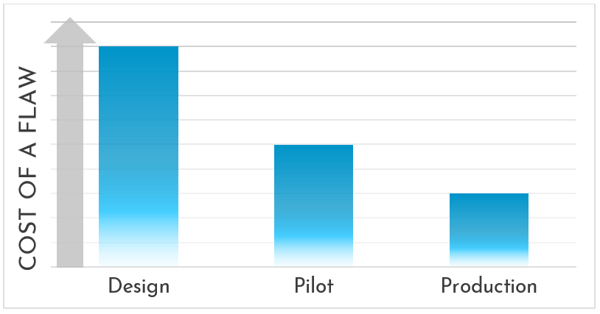Menu
- About Us
- Services
- Industries
- Resources
- Careers
- Contact

When design flaws in customer service exist, they do damage to customer service, the customer experience, your brand and the bottom line. That damage usually starts with IVR system design that doesn’t take into account the growing list of specific variables in the customer journey. It continues with a lack of proven customer support processes and training for handling and handing off calls to the right person at the right time in the right way.
This time, we’ll get into how those design flaws make it impossible to achieve production excellence. For example, when an IVR doesn’t provide the choice that a customer needs, it leads to frustration and a single-minded need to speak to a human. When that customer support agent gets that customer, they have an uphill battle. The customer’s poor experience with a non-responsive IVR just exacerbates their original frustration with the problem that they are hoping to resolve. That makes it nearly impossible to get things back on track with good customer service.
This shows how the superior execution of a customer support agent cannot mitigate the damage done by a customer support design flaw (e.g., an IVR with limited options that does not address known customer needs). Design flaw will always have a greater cost than a production flaw. In the contact center world, if you design a customer journey in a sub-optimal way, even your best agents cannot delight your customer.

Fig 1. Importance of a flawless design
The only way to avoid this problem is to take much greater care in designing processes, methods and systems for customer care centers before they are rolled out. That starts with taking this type of methodical design approach that looks at each step in the customer service process in detail. The goal is to expose any gaps or variations on customer need that can negatively impact the customer journey and address common customer support issues through process or system adjustments.
You then have to place each of those vetted steps within the larger framework to ensure that it all works together seamlessly to be sure that no other potential gaps remain. Going live is actually a continuation of that design testing as you constantly measure results against KPIs to uncover hidden potential customer service roadblocks and refine the process to eliminate them.
Trying to improve customer support etiquette with a customer service process that has design flaws is like closing the barn doors after the horse has run off. The customer journey may start through any one of several channels (phone, email online chat etc.) In each of these scenarios an actual human agent is likely to be a second step in the customer journey, which means that you can’t just concentrate on improving agent skills and expect better outcomes.
Having star customer service players isn’t enough. You have to give customer support agents a proven methodology as well as a responsive system design that ensures customers aren’t further frustrated by system design flaws before they even get transferred to an agent. This makes it easier for them to achieve customer service excellence and resolve problems quickly with a customer. By paying more attention to the customer journey and eliminating customer service design flaws, you’ll increase customer satisfaction and have happier less stressed agents that can deliver customer service excellence and spend more time providing higher levels of service to the customers.
Photo Credit: Photo by Alvaro Reyes on Unsplash
Solugenix
Technology & Process for Growth
601 Valencia Ave, Suite 260
Brea, CA 92823
Call us: 1-866-749-7658
No Comments Yet
Let us know what you think